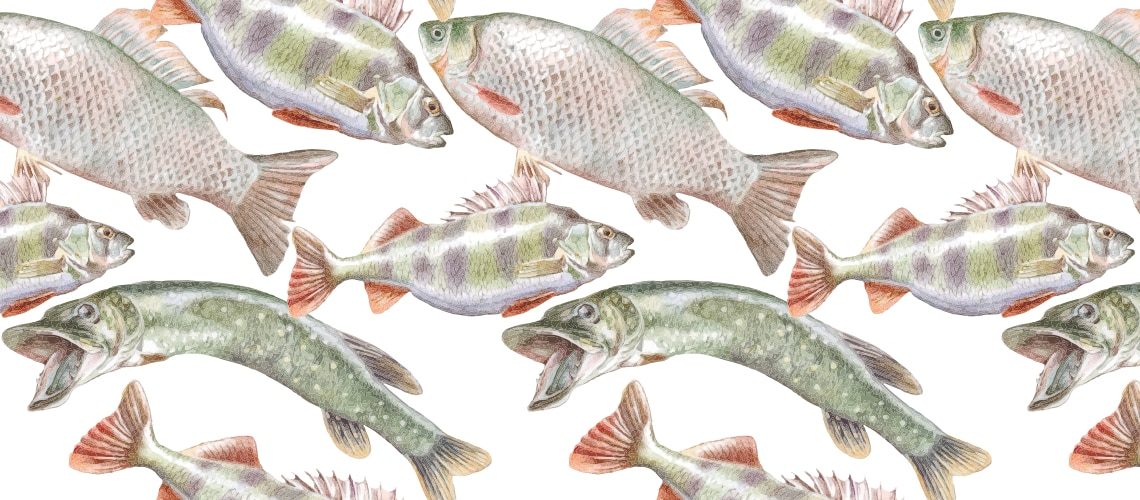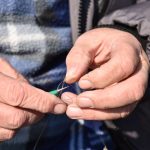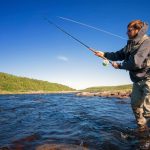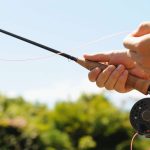The Northern U.S. and Canada are known for their wealth of natural features, and some of the most prominent of them are the countless deep, cold water bodies and a wide variety of fishes. Minnesota, Wisconsin, Michigan, and Ontario, Canada, for instance, are home to some of the world’s largest freshwater lakes by surface area. Granted, a trip to Canada or any Northern U.S. state wouldn’t be complete without a day or two of fishing in the vast, clear waters of this region.
If you’re still wondering about the types of fish you can expect to find in the Northern U.S. and Canadian waters, keep reading!
The Best Types of Fish To Look for in the Northern U.S. and Canada
Rock Bass
The Rock bass is one of the most popular fishes in the eastern regions of Canada and Connecticut. You can find it in the Great Lakes water system, particularly in the rocky areas and clear waters. This fish typically has red eyes, two dorsal fins, dark spots, and a large mouth.
It can live between 10 and 12 years and grows up to 10 inches long. One of the best ways of catching the rock bass is with a tiny, finesse tube with an internal jig head.
American Shad
If you see a fish with a cheek patch, a visible tongue when its mouth is wide open, a dark spot on the shoulder, and a gray to bluish hue on the back when it’s alive, then you must be looking at the American shad. This fish is widespread in the Northern U.S. states, and Connecticut residents living along the major rivers are very familiar with it.
You can use a bright-colored jig or plastic grub tail to catch the American shad effectively.
Northern Pike
This fish typically contains a single dorsal fin, light-colored spots on its darker body, and scales on half of its gill and the whole cheek. You can find the Northern pike in the weedy shallows of Michigan’s inland waters and the Great Lakes.
To catch it, all you need is live bait and an artificial lure. Most people also like to catch it through casting or trolling.
Walleye
Also known as Minnesota’s state fish, the Walleye is one of the most aggressive fish species in the Northern U.S. waters. The walleye is also one of the tastiest fish in Minnesota. An average walleye weighs between one and three pounds, although some have been found that exceed 10 pounds.
Spoons, such as flutter spoons and jigging spoons, are some of the best options to catch walleye, and you can use it when all the other methods you try fail.
Bowfin
The bowfin is one of the most popular fish in the ponds and sloughs of the Mississippi river, and it still remains one of the most popular fishes in Iowa. It usually has a cream-colored belly, a long, dark green dorsal fin, and a narrow olive-colored band that’s close to the top margin and another one close to the base.
Its head is flattened at the top and its teeth are characteristically sharp and well set in the jaws. As you can expect, they’re some of the toughest fighting fish in the Northern U.S. and Canadian waters. You’d therefore need to use a heavy steelhead-size rig to catch it.
Black Bullhead catfish
The black bullhead catfish is known for its long barbels that resemble cat whiskers. They usually have a squared tail, a mildly humped back and a slippery feel. This fish is most commonly found in the upper Genesee River drainage, some sections of Lake Ontario drainage and in some of St. Lawrence River tributaries.
You can find it in the soft mud bottoms where it loves staying to avoid the cold, clear water. This type of fish is generally small, rarely reaching 12 inches in length although they’re very delicious. Like most people, you’d be better off using the simpler fishing methods that involve things like a cane pole and hook, and a light tackle, to catch it.
Largemouth bass
When you go fishing in the Canadian waters, you’ll hardly miss a bass, as they’re very common in Canada. The largemouth bass is usually larger than the smallmouth, and often has a green or grey color.
As the name suggests, the Largemouth typically has a large mouth that goes beyond its face, and the fish can reach 27 inches long. There are many hotspots for this type of fish in Southern Ontario, and you can use artificial lures and live bait to attract and catch them.
Atlantic salmon
The Atlantic salmon’s forked tail, black spots on the upper part of their body and silver flanks make it one of the easiest fishes to spot in the water. This type of fish is found in a number of areas in the Northern U.S. and Canada, including Vermont’s Lake Dunmore and Lake Champlain.
To make the most of your efforts, you can use smelt-imitating stickbaits to fish the Atlantic salmon.





